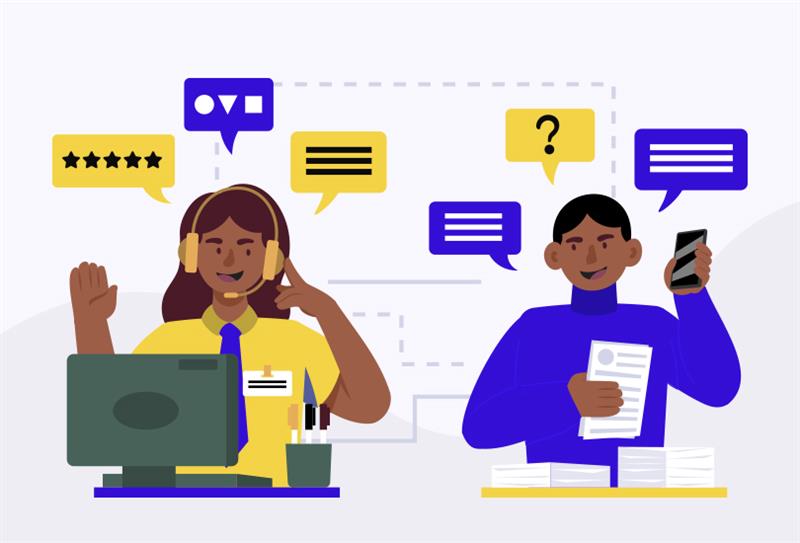You’ve probably heard the saying, “Silence is worse than complaint.” It sticks because it’s true. A complaining customer is still giving you a chance; they’re telling you what’s broken instead of quietly walking away. The real danger is when they stop talking – by then, they have moved on to the next competitor. That’s why focusing on complaints shouldn’t be optional; it should be survival.
In a world where one bad review can travel faster than your marketing strategies ever will, the way you respond to a single frustrated customer can set the tone for your overall credibility. This post unpacks how to sort, respond, and act on complaints so they become a source of growth rather than a strain on your team.
The Cost of Ignoring Voices
Acquiring a new customer can cost up to five times more than keeping an existing one. Harvard Business Review also notes that a 5% boost in retention can lift profits by 25–95%. If complaints go unheard, businesses don’t merely lose feedback – they lose revenue and trust.
Case in point: Domino’s Pizza. In 2009, harsh customer feedback—words like “pizza tastes like cardboard”—forced a complete brand and recipe overhaul. They publicly leaned into criticism, rebuilt their product, and rebuilt trust. That shift turned a crisis into a comeback.
Seven Steps to Prioritize Complaints
Most businesses don’t struggle with too less complaints – they struggle with messy handling. Without structure, chaos builds, and customers feel ignored. A simple seven-step approach keeps things organized and frustration at a low level.
- Listen Everywhere
Complaints don’t just land in your support inbox. They show up in emails, chats, Twitter rants, app store reviews, and even random Reddit threads. If you’re only watching one channel, you’re flying blind and missing half the picture. - Triage Urgency
Not all complaints deserve the same level of attention. If your payment system breaks, that’s a fire to put out immediately. A suggestion for a new button color? That can wait. Sorting by urgency keeps your team focused where it really counts. - Categorize
Add structure by tagging issues—such as billing, bugs, usability, shipping, or whatever fits your business. Over time, those tags become gold. They reveal patterns, such as a recurring bug that frustrates everyone or a specific bottleneck that slows service. - Set SLAs (Service Level Agreements)
People don’t expect miracles, but they do want reassurance. Set clear timelines: maybe one hour for critical failures, 24 hours for smaller headaches. Even if you don’t have a fix yet, letting customers know you’re on it makes all the difference. - Assign Ownership
A billing complaint dumped on your tech team? That’s wasted time. Make ownership clear so the right people handle the right problems. Accountability speeds everything up. - Review Patterns Weekly
Zoom out from the daily grind. Are shipping complaints spiking? Do customers from one region complain more than others? Weekly reviews highlight bigger problems before they blow up. - Close the Loop
Here’s where most companies stumble. Fixing the issue isn’t enough—you have to circle back. Let the customer know what was done, and thank them for pointing it out. That small step often flips frustration into loyalty.
Handled this way, complaints stop being noisy distractions. Instead, they turn into a roadmap showing you exactly where the business needs to sharpen up.
VooChat Makes Prioritization Possible
Your road map is only as strong as your tools. This is where VooChat’s modules shine:
- Chat Bot: Handles initial intake for common complaints and prioritizes routing.
- Helpdesk: Lets teams track each complaint as a ticket, set SLAs, and monitor status.
- Knowledgebase: Turns recurring complaints into self-serve content, reducing repeat tickets.
- Omnichannel Messaging: Consolidates feedback from every channel into one view.
- Sentiment Analytics: Highlights complaints trending negative so teams act before escalation.
Customer-Centric Insights
Here’s the tricky part: complaints aren’t just data points. They come wrapped in emotion – anger, disappointment, or even sarcasm. If your response is cold or formulaic, you risk inflaming the situation.
The first step is listening. Customers want to feel heard. A quick, thoughtful acknowledgment often calms tension before the real fix begins. Research from multiple service studies shows that the speed of response often matters as much as the solution itself. When customers know you’ve seen their complaint, patience increases.
Empathy is the next layer. A line like, “I can see how frustrating that must be,” goes further than a generic, “We value your feedback.” When you explain the fix and why you made it, you move from transactional service to relational trust. That’s when an angry customer becomes a loyal one.
Starbucks has shown this well. They monitor social channels closely and respond quickly to complaints, sometimes even rolling out product tweaks based on customer chatter. That sense of being “heard” keeps customers engaged, even when mistakes happen.
Practical Takeaways
It is good to invest your time, energy, and money in designing well-thought-out strategies, but they’re not always practically applicable when you’re in the thick of things. In such moments, what actually pays off is a tactical approach you can instinctively employ right away. So, if you’re trying to figure out something instantly doable you can put into action today, here are five simple takeaways worth trying:
- Focus on severity before volume – a single outage complaint matters more than ten feature requests.
- Use automation to catch signals you’d otherwise miss. Chatbots, tags, and sentiment alerts save time.
- Don’t escalate everything. Escalation fatigue makes real emergencies harder to spot.
- Convert recurring complaints into knowledgebase articles – self-service empowers customers.
- Always close the loop. Tell customers the issue is fixed, not just logged.
None of this is rocket science. It’s simply about small, steady changes that add up. Start accepting complaints as opportunities to build trust, and you’ll see how quickly the customer experience shifts for the better.
FAQs
First of all, sorting is done on the basis of urgency and impact, then you are supposed to tag explicitly, and finally allocate to teams.
Begin with an immediate response, then empathize, solve, and ultimately follow up to confirm satisfaction.
Receive, assess, assign, resolve, and provide feedback.
Address the top three complaints daily by immediacy, impact, and frequency.
The 5 Cs of customer service would include: Care, Consistency, Communication, Competence, and Courtesy.
Conclusion
Contrary to popular belief, complaints are actually opportunities hidden behind frustrations. You may enhance your company’s efficiency, transparency, and credibility by perceiving them as helpful signals rather than irritants.
It was proven by Domino’s. Every day, Starbucks displays it. In fact, it is something that many companies remember each time they successfully convert a dissatisfied consumer into a devoted one.
To ease into it, use the seven-step framework to triage your next set of complaints. Make things easier for yourself by making use of VooChat. Above all else, listen with compassion. In that way, grievances can be transformed from times of flux into opportunities for development.
For the simple reason that winning businesses aren’t always those who receive the fewest complaints. They’re the experts who can make the most of them.








